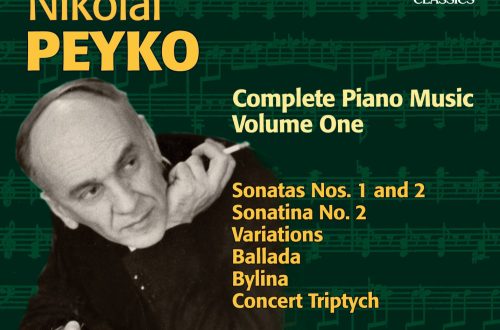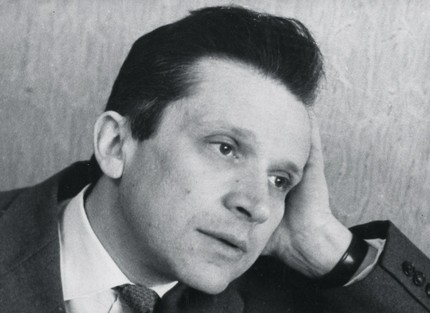
Sergei Artemyevich Balasanian |
Sergey Reply
The music of this composer is always original, unusual, inventive and, listening to it, you fall under the irresistible charm of beauty and freshness. A. Khachaturyan
Creativity S. Balasanyan deeply international in nature. Having strong roots in Armenian culture, he studied and originally embodied in his works the folklore of many peoples. Balasanyan was born in Ashgabat. In 1935 he graduated from the radio department of the historical and theoretical faculty of the Moscow Conservatory, where A. Alschwang was its leader. Balasanyan studied composition for a year in a creative workshop created on the initiative of students. Here his teacher was D. Kabalevsky. Since 1936, Balasanyan’s life and creative activity have been connected with Dushanbe, where he comes on his own initiative to prepare the forthcoming decade of literature and art of Tajikistan in Moscow. The ground for work was fertile: the foundations of a professional musical culture were just being laid in the republic, and Balasanyan is actively involved in its construction as a composer, public and musical figure, folklorist and teacher. It was necessary to teach musicians how to read music, to instill in them and in their listeners the habit of polyphony and tempered tuning. At the same time, he studies national folklore and classical maqoms in order to use them in his work.
In 1937, Balasanyan wrote the musical drama “Vose” (a play by A. Dehoti, M. Tursunzade, G. Abdullo). She was the forerunner of his first opera, The Rising of Vose (1939), which became the first Tajik professional opera. Its plot is based on the uprising of peasants against local feudal lords in 1883-85. under the leadership of the legendary Vose. In 1941, the opera The Blacksmith Kova appeared (libre by A. Lakhuti based on Shahnameh Firdowsi). The Tajik composer-melodist Sh. Bobokalonov took part in its creation, his melodies, along with genuine folk and classical melodies, were included in the opera. “I wanted to use the rich meter-rhythmic possibilities of Tajik folklore more widely… Here I tried to find a broader operatic style…” Balasanyan wrote. In 1941, the operas The Rebellion of Vose and The Blacksmith Kova were performed in Moscow during the decade of literature and art of Tajikistan. During the war years, Balasanyan, who became the first chairman of the board of the Union of Composers of Tajikistan, continued his active composer and social activities. In 1942-43. he is the artistic director of the opera house in Dushanbe. In collaboration with the Tajik composer Z. Shahidi Balasanyan creates the musical comedy “Rosia” (1942), as well as the musical drama “Song of Anger” (1942) – works that became a response to the events of the war. In 1943 the composer moved to Moscow. He worked as deputy chairman of the All-Union Radio Committee (1949-54), then (at first sporadically, and since 1955 permanently) taught at the Moscow Conservatory. But his connections with Tajik music were not interrupted. During this period, Balasanyan wrote his famous ballet “Leyli and Majnun” (1947) and the opera “Bakhtior and Nisso” (1954) (based on the novel by P. Luknitsky “Nisso”) – the first Tajik opera based on a plot close to modern times ( the oppressed inhabitants of the Pamir village of Siatang are gradually realizing the arrival of a new life).
In the ballet “Leyli and Majnun” Balasanyan turned to the Indian version of the famous oriental legend, according to which Leyli is a priestess in the temple (lib. S. Penina). In the second version of the ballet (1956), the scene of action is transferred to the ancient state of Sogdiana, located on the site of modern Tajikistan. In this edition, the composer uses folk themes, implements Tajik national customs (tulip festival). The musical dramaturgy of the ballet is based on leitmotifs. The main characters are also endowed with them – Leyli and Majnun, who are always striving for each other, whose meetings (occurring in reality or imaginary) – duet adagios – are the most important moments in the development of the action. They set off with their lyricism, psychological fullness, crowd scenes of various character – dances of girls and men’s dances. In 1964, Balasanyan made the third edition of the ballet, in which he was staged on the stage of the Bolshoi Theater of the USSR and the Kremlin Palace of Congresses (the main parts were performed by N. Bessmertnova and V. Vasiliev).
In 1956 Balasanyan turned to Afghan music. This is the “Afghan Suite” for orchestra, which embodies the element of dance in its various manifestations, then there are “Afghan Pictures” (1959) – a cycle of five miniatures bright in mood.
The most important sphere of Balasanyan’s creativity is connected with the Armenian culture. The first appeal to her was romances on the verses of V. Terian (1944) and the classic of national poetry A. Isahakyan (1955). Major creative successes were orchestral compositions – “Armenian Rhapsody” of a brightly concert character (1944) and especially the suite Seven Armenian Songs (1955), which the composer defined as “genre-scenes-pictures”. The orchestral style of the composition is exquisitely impressionistic, inspired by pictures of everyday life and nature in Armenia. In Seven Armenian Songs, Balasanyan used melodies from Komitas’ Ethnographic Collection. “The remarkable quality of this music is the wise tact in dealing with the folk primary source,” writes composer Y. Butsko, a student of Balasanyan. Many years later, Komitas’s collection inspired Balasanyan to fundamental work – arranging it for the piano. This is how the Songs of Armenia (1969) appear – 100 miniatures, combined into 6 notebooks. The composer strictly follows the order of melodies recorded by Komitas, without changing a single sound in them. Nine songs of Komitas for mezzo-soprano and baritone accompanied by orchestra (1956), Eight pieces for string orchestra on the themes of Komitas (1971), Six pieces for violin and piano (1970) are also connected with the work of Komitas. Another name in the history of Armenian culture attracted the attention of Balasanyan – ashug Sayat-Nova. First, he writes music for the radio show “Sayat-Nova” (1956) based on the poem by G. Saryan, then he makes Three adaptations of Sayat-Nova’s songs for voice and piano (1957). The Second Symphony for String Orchestra (1974) is also associated with Armenian music, in which the material of ancient Armenian monodic tunes is used. Another significant page of Balasanyan’s work is connected with the culture of India and Indonesia. He writes music for the radio dramas The Tree of Water (1955) and The Flowers Are Red (1956) based on stories by Krishnan Chandra; to the play by N. Guseva “Ramayana” (1960), staged at the Central Children’s Theater; Five romances on verses by the Indian poet Suryakant Tripathi Nirano (1965), “Islands of Indonesia” (1960, 6 exotic landscape-genre paintings), arranges four Indonesian children’s songs by Reni Putirai Kaya for voice and piano (1961). In 1962-63 the composer creates the ballet “Shakuntala” (based on the drama of the same name by Kalidasa). Balasanyan studies folklore and culture of India. To this end, in 1961 he made a trip to this country. In the same year, the orchestral Rhapsody on themes by Rabindranath Tagore, based on genuine Tagore melodies, and Six Songs of Rabindranath Tagore for voice and orchestra appeared. “Sergey Artemyevich Balasanyan has a special affinity with Tagore,” says his student N. Korndorf, “Tagor is“ his ”writer, and this is expressed not only in writings on the topics of this writer, but also in a certain spiritual relationship of artists.”
The geography of Balasanyan’s creative interests is not limited to the listed works. The composer also turned to the folklore of Africa (Four Folk Songs of Africa for voice and piano – 1961), Latin America (Two songs of Latin America for voice and piano – 1961), wrote openly emotional 5 ballads My Land for baritone with piano to the verses of the Cameroonian poet Elolonge Epanya Yondo (1962). From this cycle there is a path to the Symphony for choir a cappella to the verses of E. Mezhelaitis and K. Kuliev (1968), 3 parts of which (“The Bells of Buchenwald”, “Lullaby”, “Icariad”) are united by the theme of philosophical reflection on the fate of man and humanity.
Among Balasanyan’s latest compositions are the lyrically frank Sonata for cello solo (1976), the vocal-instrumental poem “Amethyst” (on the verse by E. Mezhelaitis based on Tagore’s motives – 1977). (In 1971, Balasanyan and Mezhelaitis traveled together to India.) In the text of Amethyst, 2 worlds seem to unite – the philosophy of Tagore and the poetry of Mezhelaitis.
In recent years, Armenian motifs have reappeared in Balasanyan’s work – a cycle of four short stories for two pianos “Across Armenia” (1978), vocal cycles “Hello to you, joy” (on G. Emin, 1979), “From medieval Armenian poetry “(at the station N. Kuchak, 1981). Remaining a faithful son of his native land, the composer embraced in his work a wide range of music from different nations, being an example of true internationalism in art.
N. Aleksenko





